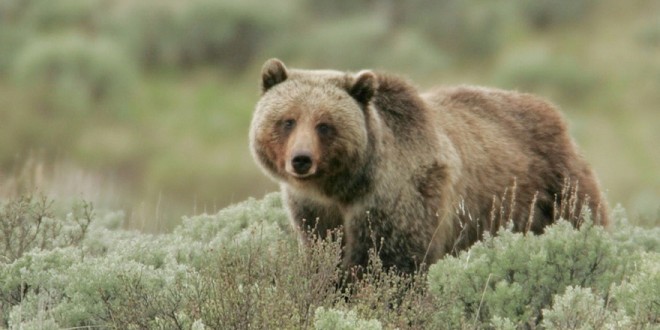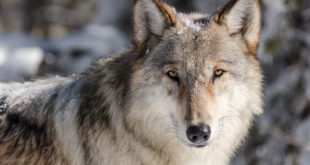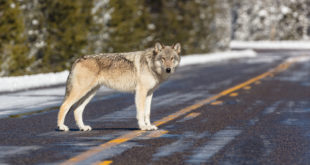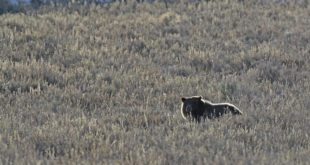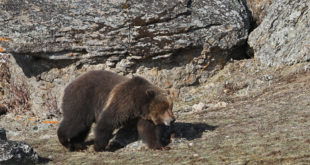While it’s far from clear Yellowstone wolves have impacted the regional elk population, one thing is clear: the decline in elk is good news for bears fattening up on berries.
Some groups hold that reintroducing wolves to Yellowstone National Park has resulted in a decline in elk population in the region. But correlation does not imply causation, and putting together two facts doesn’t mean they are linked. Indeed, a recent study argues that wolves have not impacted the elk population; rather, a notable decline has come with the onset of drought years in the region.
There is one fact that comes out of the elk decline: with fewer elks to feast on berries, animals that rely on berries for nutrition are having a field day. At the top of that particular little food chain: grizzly bears, who have been eating more and more berries in recent years. A study in the Journal of Animal Ecology published today argues the decline in elk also ended an overbrowsing in plants and bushes like the serviceberry, chokecherry, buffaloberry, twinberry and huckleberry.
The researchers found that the level of berries consumed by Yellowstone grizzlies is significantly higher now that shrubs are starting to recover following the re-introduction of wolves, which have reduced over-browsing by elk herds. The berry bushes also produce flowers of value to pollinators like butterflies, insects and hummingbirds; food for other small and large mammals; and special benefits to birds.
The report said that berries may be sufficiently important to grizzly bear diet and health that they could be considered in legal disputes – as is white pine nut availability now – about whether or not to change the “threatened” status of grizzly bears under the Endangered Species Act.
“Wild fruit is typically an important part of grizzly bear diet, especially in late summer when they are trying to gain weight as rapidly as possible before winter hibernation,” said William Ripple, a professor in the Oregon State University Department of Forest Ecosystems and Society, and lead author on the article. “Berries are one part of a diverse food source that aids bear survival and reproduction, and at certain times of the year can be more than half their diet in many places in North America.”
“Studies like this also point to the need for an ecologically effective number of wolves,” said co-author Robert Beschta, an OSU professor emeritus. “As we learn more about the cascading effects they have on ecosystems, the issue may be more than having just enough individual wolves so they can survive as a species. In some situations, we may wish to consider the numbers necessary to help control overbrowsing, allow tree and shrub recovery, and restore ecosystem health.”
Image of Yellowstone grizzly courtesy National Park Service.
 Yellowstone Insider Your Complete Guide to America's First National Park
Yellowstone Insider Your Complete Guide to America's First National Park
